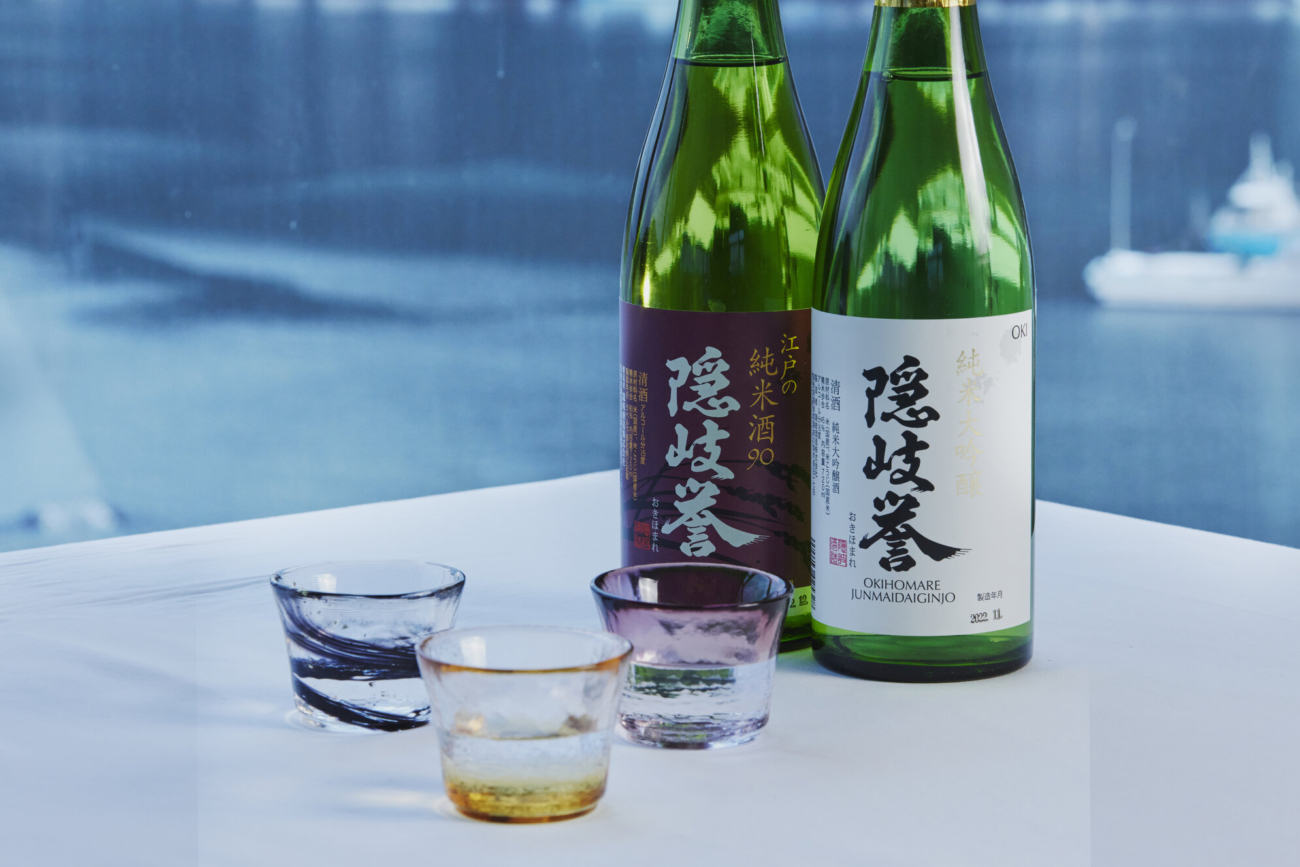Oki Homare Junmai Ginjo
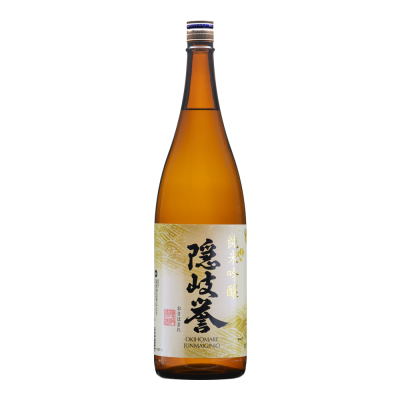
The first sake to be introduced is the classic, Oki Homare Junmai Ginjo. This sake has a rice-polishing ratio of 55%*, making it refreshing and smooth to the palate. Mr. Mori highly recommends using this sake to make steamed crab.
*Rice-polishing ratio (seimaibuai): The percentage of rice left over after the brown rice (genmai) has been polished. Oki Homare Junmai Ginjo has a rice polishing ratio of 55%, and it is made from brown rice that has had its surface polished by 45%.
Oki Homare Junmai Daiginjo Tobin-kakoi
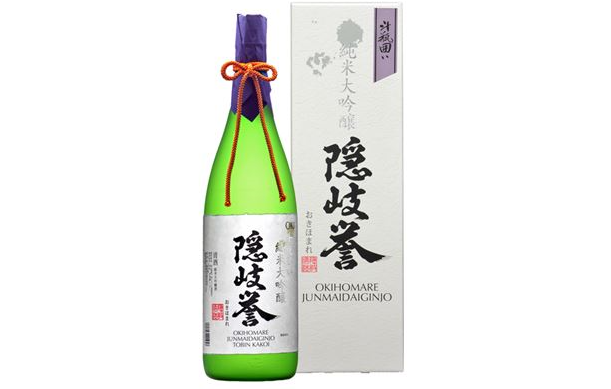
Next, is Oki Homare Junmai Daiginjo Tobin-kakoi. “Tobin-kakoi” is a sake brewed using a process called moromi. The ingredients are put in a cloth bag to ferment. The dripping liquid from the soft solid is collected in a tobin (a bottle with a capacity of 18L) and stored at low temperature.
This sake has a rice-polishing ratio of 35%, and since the drops are collected without the ingredients being squeezed, there is no unfavourable taste (zatsumi) and the aftertaste disappears quickly. It has a very fragrant and fruity taste, with a delicate sweetness that is simply gorgeous and makes a great toast.
Oki Homare Muromachi-no-Junmaishu 90
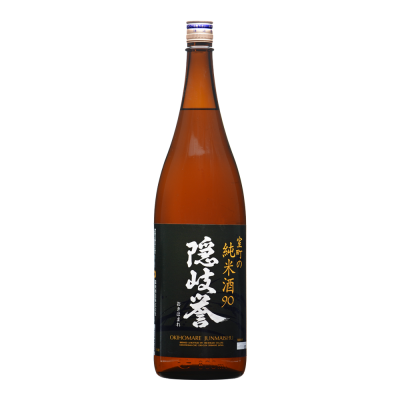
The third sake to be introduced is Oki Homare Muromachi-no-Junmaishu 90. Oki Islands are well-known as the location of remote island exile, and many of you may have already heard of the stories of Emperor Go-Toba and Emperor Go-Daigo.
Muromachi-no-Junmaishu 90 is a reproduction of the sake that Emperor Go-Toba and Emperor Go-Daigo once drank; it is recreated based on the recipe described in the document “Goshu-no-Nikki” (the first technical book on sake brewing in existence in Japan).
This sake, with a rice-polishing ratio of 90% and brewed mostly using brown rice, is made using the kimoto-zukuri method. This method was used back in the days and utilises the power of natural fermentation. This sake is amber in colour, rich in flavour with a sharp aftertaste and a clean finish.
This sake pairs well with dishes with strong flavours, such as Chinese cuisine, Italian cuisine, sukiyaki (a Japanese one-pot dish of beef and vegetables), beef stew, eel, etc. It can also be served warm (atsukan).
Oki Homare Edo-no-Junmaishu 90
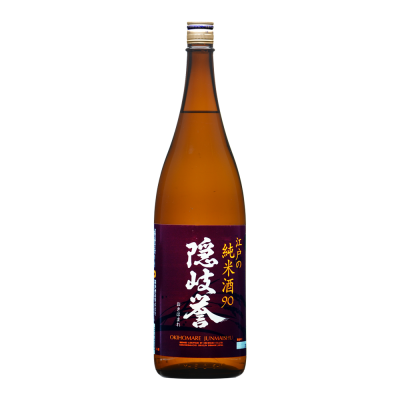
The last one on the list is Oki Homare Edo-no-Junmaishu 90. This is also a reproduction of sake from the past; you can feel the history with this one. During the Meiji Restoration, there was an incident known as the “Oki Rebellion” (1868), in which the magistrate of the Matsue Domain was expelled from the islands and a self-governing government was established.
Edo-no-Junmaishu is a reproduction of the sake that the islanders gifted to the departing magistrate of the Matsue Domain, which was also presented to Koizumi Yakumo (Lafcadio Hearn) when he visited the islands. In fact, Hearn left a record of him drinking this sake, stating “it goes well with Japanese food. It has the colour of a lemonade and the strength of a sherry; it brings a pleasant tipsiness but it does not linger.” This sake is full-bodied yet very dry and has a good aftertaste, just like a dry sherry or a dry wine.
This sake goes well with dishes with a slightly strong flavour, such as yakitori (grilled chicken skewers), tempura, etc. This sake is also brewed using the kimoto-zukuri method of natural fermentation, which was also popular during the Edo Period (1603 – 1868).
How did you like it?
According to Mr. Mori, “a good sake is characterised by its aftertaste which disappears very quickly.” Therefore, if you keep in mind the rough differences such as rich and light, dry and sweet flavours, then you will be able to pair the sake with different cuisines and dishes.
This time, Mr. Mori has recommended 4 of the local Oki sake. We hope that this article will give you a slight sneak peek into the world of sake on the Oki Islands. If you enjoy Japanese sake, come visit us and try our local sake!
Translation: Cleo Wong

